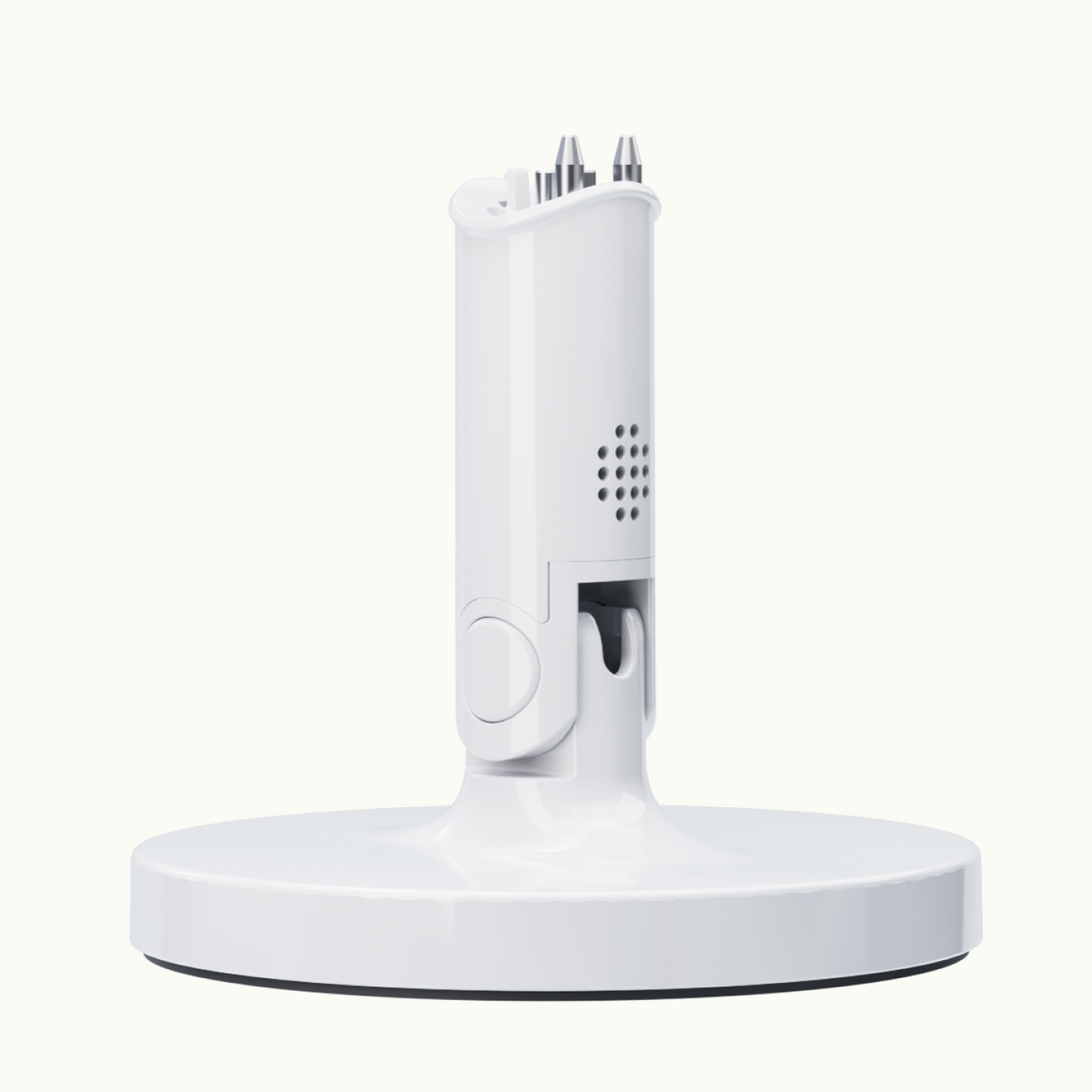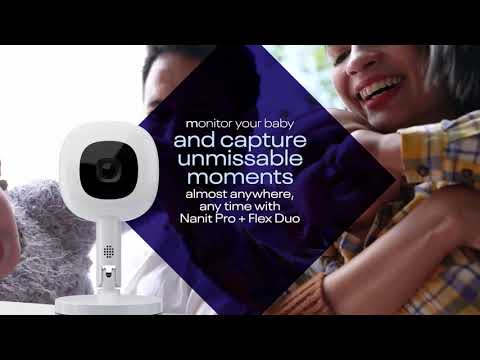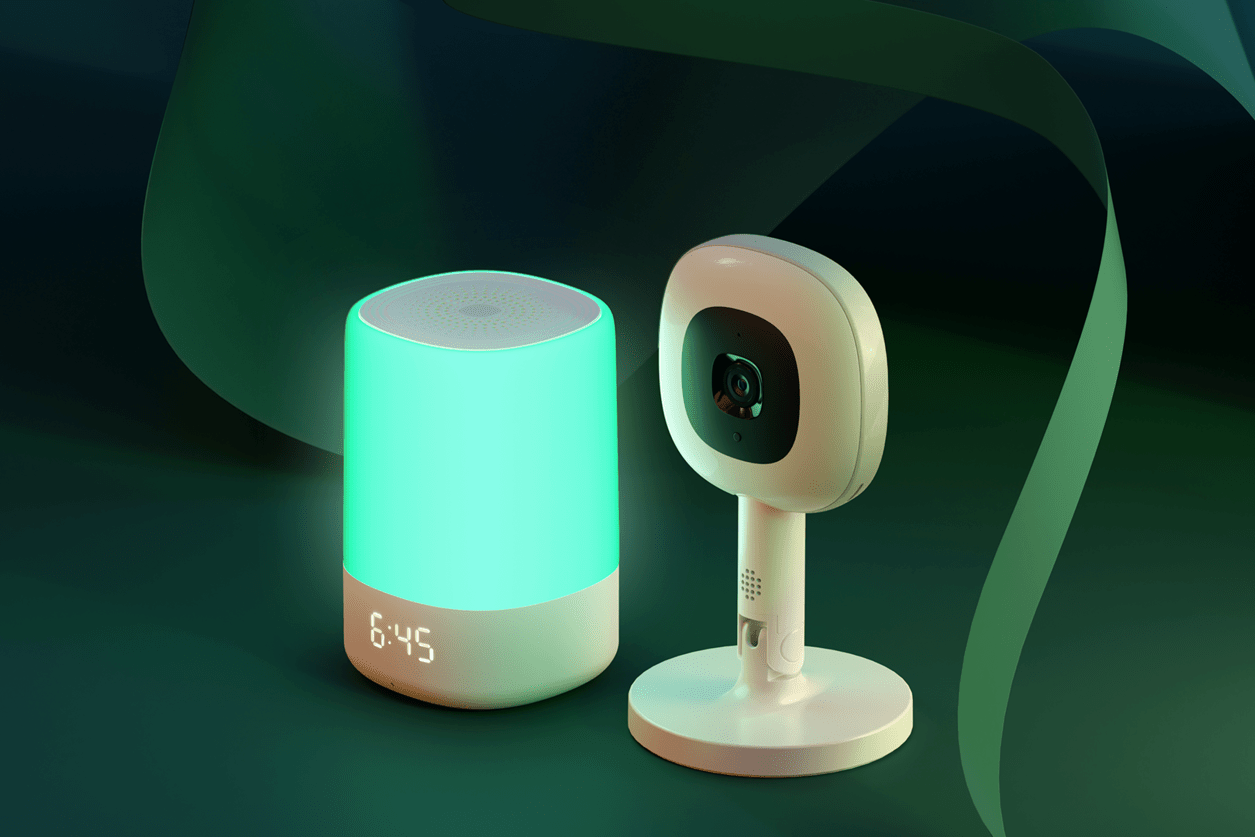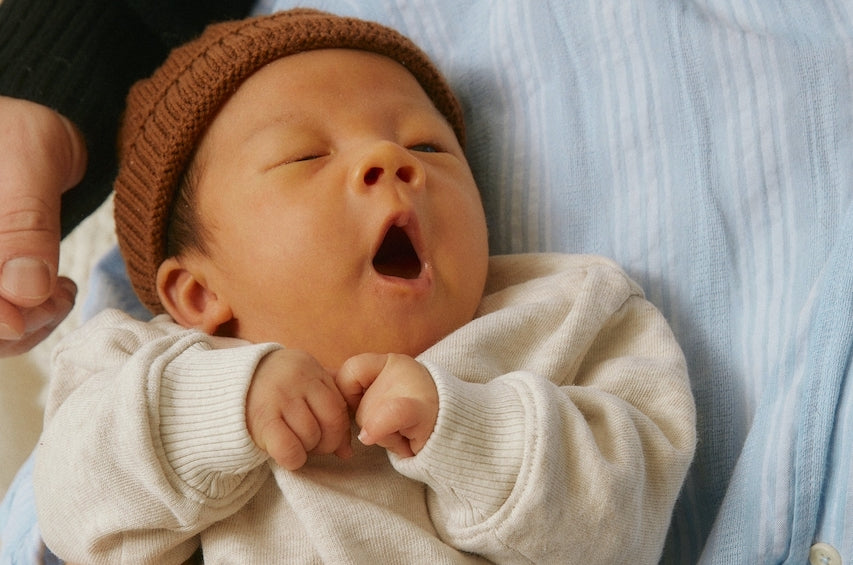One minute it seems like your little one is living their best life. They’re staring at the ceiling fan, sucking on their tiny fist, and filling the room with their infectiously precious cooing. Suddenly, they're crying at the top of their little lungs, leaving you to wonder what why. Is it a sudden chill in the air, a personal vendetta against the ceiling fan, or simply fatigue?
Chances are, as a busy parent you may have missed a few signs that your baby is ready for some much-needed rest. Since babies can't express themselves, they rely on their body language to communicate their needs.
Snuggle up with your sweet, sleepy baby as we explore everything you need to know about baby sleep cues, including why they matter and what to watch for, as well as how to establish a healthy sleep routine for your little one.
What are baby sleep cues?
Unfortunately, your newborn can’t tap you on the shoulder and say, “Hey, I'm tired!” every time they’re ready for a snooze. However, they do have their own way of communicating. Instead of using words, babies have various ways of expressing themselves and their needs through body language, including sleep cues and hunger cues.
This particular category of body language is referred to as sleep cues. Simply put, sleep cues are the physical signs babies use to let you know they're tired. Have you ever noticed your little one seemingly gazing into space? That's a baby’s sleep cue. Or when they suddenly look away from moving people or objects? Boom, another one.
Why is recognizing sleep cues important?
From yawns to the obvious fussiness, your baby will almost always signal when they're feeling tired. If you miss those sleep cues (or if life becomes a bit chaotic—aka every day with little people), your baby is more likely to transition from being sleepy to being overtired.
If you've never experienced an overtired baby, this might not seem like a big deal. However, when a newborn or baby becomes overtired, they sometimes experience a sudden burst of energy. This doesn't mean they don't need a nap. Rather, it means that it might be more challenging for them to fall—and stay—asleep.
It’s essential to recognize your little one's sleep cues earlier so that you can comfort them and help them sleep before they reach the point of becoming overtired.
What do different types of sleep cues look like?
You might not know all of the sleep cues yet, but before long, you’ll be a pro at deciphering when they’re ready for a little R&R. However, not all babies use the same sleep cues. In fact, newborns often communicate differently than older babies and toddlers.
Below, we break down some common sleepy cues to be on the lookout for depending on your little one’s age:
Newborn sleep cues
Newborns won’t immediately know the difference between day and night. For this reason, newborn babies sleep sporadically.
They usually learn the difference between day and night sometime between two to three months old. Until then, babies follow wake windows of about 30 minutes to 1.5 hours, give or take. These wake windows vary from baby to baby and might get a bit longer as the day goes on. As you learn to understand their wake windows, you can keep your eyes peeled for any signs of newborn sleep cues, including:
- Staring blankly
- Turning their face away from people and objects
- Yawning and stretching
- Rubbing their eyes
- Pulling their ears
- Arching their back
Baby and toddler sleep cues
As your little one graduates from the newborn phase into the exciting and evolutionary world of babyhood, their sleepy cues will slowly start to change into other forms of communication signals.
While they won’t change overnight, you’ll slowly start to notice the introduction of the following sleepy cues in children aged 3-18 months:
- Clinginess
- Clumsiness
- Demanding attention
- Fussiness when eating or drinking
- Crying
How to create a sleep routine based on sleep cues
If you're the sleep-deprived parent of a very sporadic newborn sleeper, knowing how to deal with sleep deprivation is crucial. Newborns won't adhere to a strict sleeping routine because they need to feed around the clock—and a more structured sleep routine doesn't take shape until the baby moves past the newborn phase. Rest assured, this time is only temporary. As your baby grows older and learns to distinguish between day and night, you'll gradually establish a feeding and sleeping routine, paving the way for longer and more restful sleep stretches.
Once your baby has checked “mastering night and day” off their to-do list, you can start utilizing their cues to establish a feeding and sleeping routine that benefits the entire family:
1. Hone in on sleep cues
The first step to crafting a sleepytime routine for your little one is mastering their sleepy cues. To do this, focus on what your baby does toward the end of their wake window. What signs are they giving you? Are they an ear puller, an eye rubber, or maybe both?
2. Take note of baby’s sleep patterns
After you’ve mastered what to expect when they’re sleepy, you can take mental notes that give you even more insight into what to expect when your baby is tired.
Consider the following questions to help you determine your little one’s current sleep schedule:
- How long were they awake before they showed signs of being tired?
- What were their sleep cues?
- How long did they sleep during their nap?
One way to ensure you’re recording your baby’s precise sleep times from start to finish is by using a baby monitor that tracks their movements, as well as the room’s temperature and humidity levels. Baby monitors that offer these advanced features can accurately record how much sleep your baby is getting and even create personalized sleep reports that you can easily access from your phone.
3. Create a consistent and comfortable sleep environment
Apart from the newborn days when you’re helping your baby establish the correct times for waking and sleeping, it’s important to craft a sleep environment your baby can depend on day after day. Here are a few boxes you can check off to ensure a conducive sleep setting for your snuggly babe:
- Choose a quiet room away from outside noise.
- Keep the temperature set to approximately 68 to 72 degrees Fahrenheit.
- Incorporate a Sound + Light Machine that can help gently lull your little one to sleep.
- Use a cozy Sleeping Bag or Swaddle to keep them warm. While blankets might seem like a snuggly and safe option, they put babies at a higher risk of succumbing to sleep-related suffocation.
4. Establish a nightly bedtime routine
What better way to help your baby adjust to a sleep schedule than by creating and sticking to a nightly routine? Consider the comforting activities you do with your little one before bedtime and incorporate them into a consistent evening regimen.
Wind-down activities can include:
- Giving them a warm bath
- Reading books together (even a few pages will do the trick)
- Singing lullabies to them
Activities like these can signal to your baby that it's almost time for sleep. Keep in mind that the key to establishing an effective bedtime routine is consistency each day.
Sleep is easier with Nanit
Understanding your baby's sleep cues is essential for avoiding the tear-filled state of overtiredness. Once you’ve mastered this, you can move on to the next task: making sure they (and you) are receiving quality sleep each night.
At Nanit, we understand the importance of helping families establish healthy sleep patterns for their babies. That's why we offer a range of innovative baby monitors that use real, personalized data to keep you as informed as possible. Our baby monitor features an easy-to-use app that allows you to access your baby's sleep patterns, monitor multiple children simultaneously, and capture precious milestones—all at the touch of a button.
By harnessing the power of technology and personalized data, Nanit empowers you to create a routine tailored to your baby's unique needs, ensuring both you and your little one enjoy restful nights.
Key takeaways
- Understanding your baby's sleep cues is crucial to preventing overtiredness and establishing a healthy sleep routine.
- Sleep cues evolve as your baby grows, so it's important to recognize the changes in their sleepy signals based on their age.
- Nanit offers innovative baby monitors that use personalized data to keep families informed about their baby's sleep patterns, making it easier to establish a consistent bedtime routine and ensure everyone gets the rest they need.
Sources:
What To Expect. Signs of a Tired Baby. https://www.whattoexpect.com/first-year/sleep/overtired-baby/
Better Health. Typical sleep behaviour (1) – newborns 0 to 3 months. https://www.betterhealth.vic.gov.au/health/healthyliving/typical-sleep-behaviour-nb-0-3-months
Gloucestershire Health and Care. Sleep Cues! https://www.ghc.nhs.uk/wp-content/uploads/2020-Handy-Sleep-Guide.pdf
Raising Children. Tired Signs in Babies and Toddlers. https://raisingchildren.net.au/babies/sleep/understanding-sleep/tired-signs
NIH. Creating a safe sleep environment for your baby. https://www.ncbi.nlm.nih.gov/pmc/articles/PMC2724136/
Pediatric Sleep Counsel. Development of infant and toddler sleep patterns: Real-world data from a mobile application. https://www.babysleep.com/research/development-of-infant-and-toddler-sleep-patterns-real-world-data-from-a-mobile-application/






